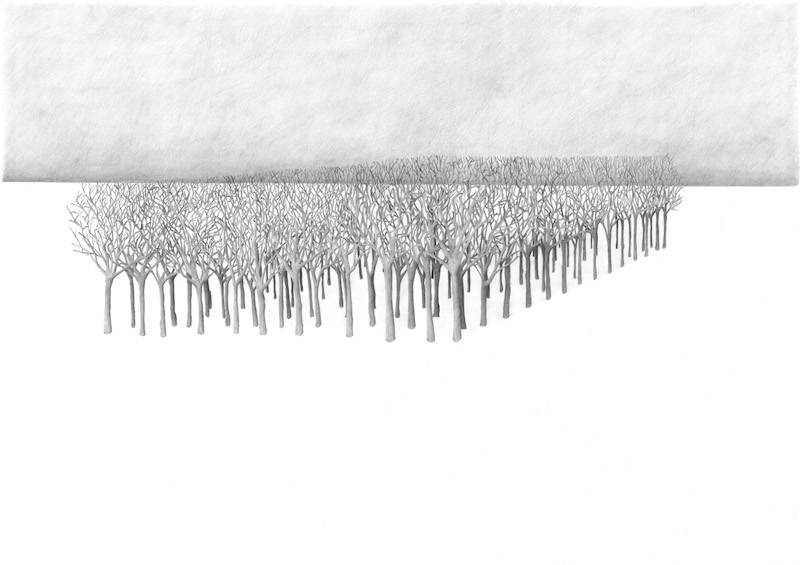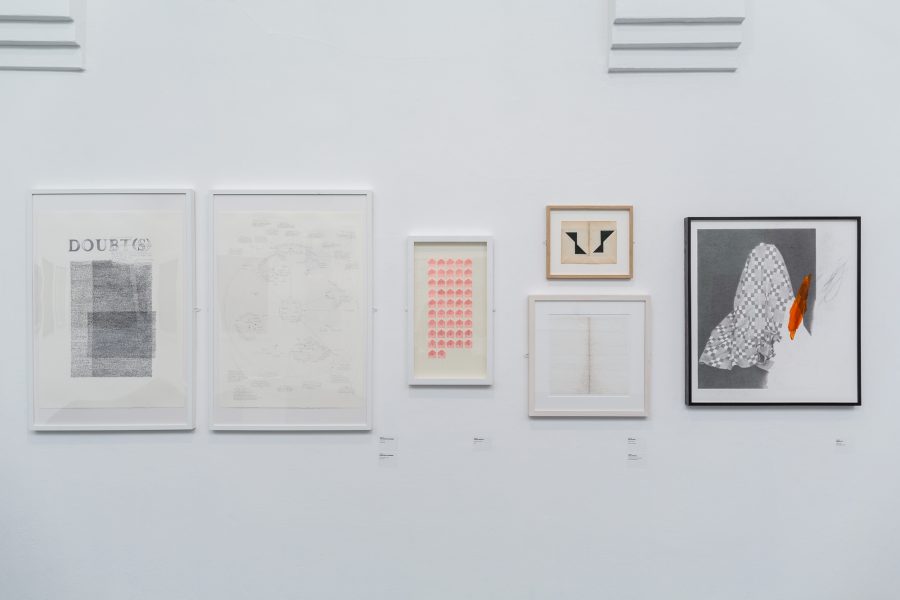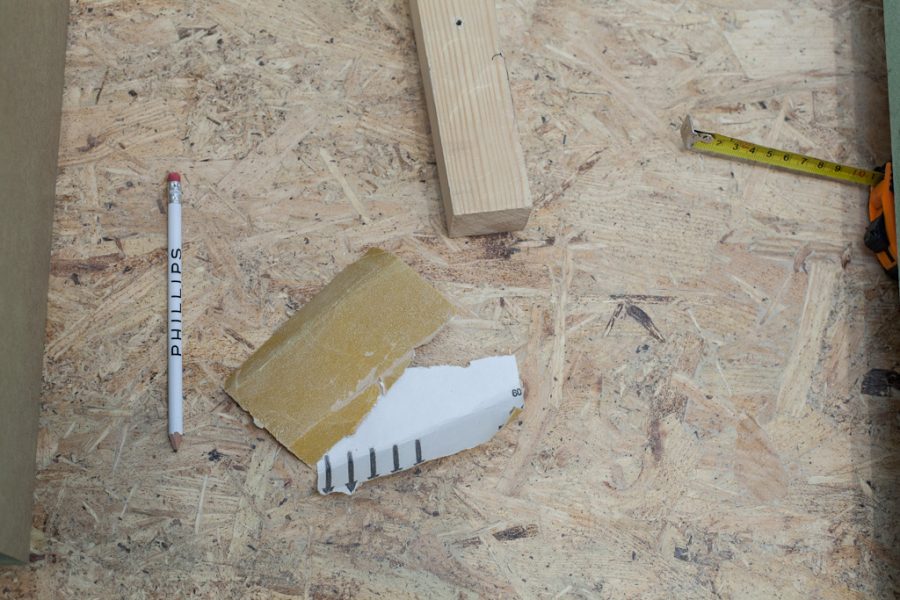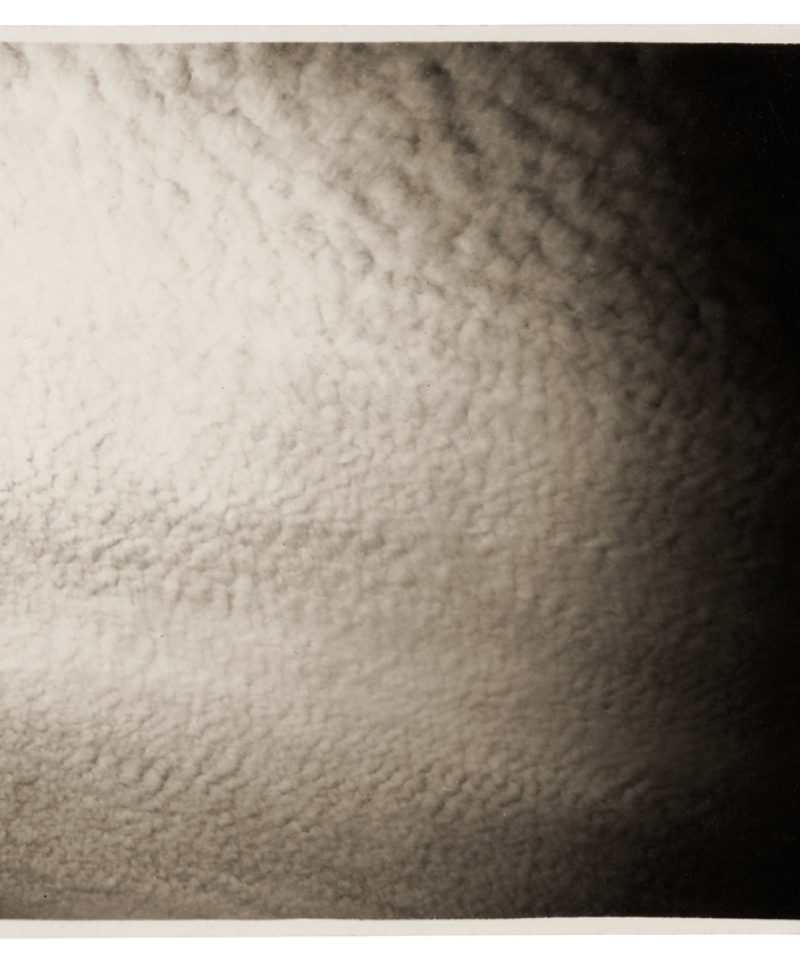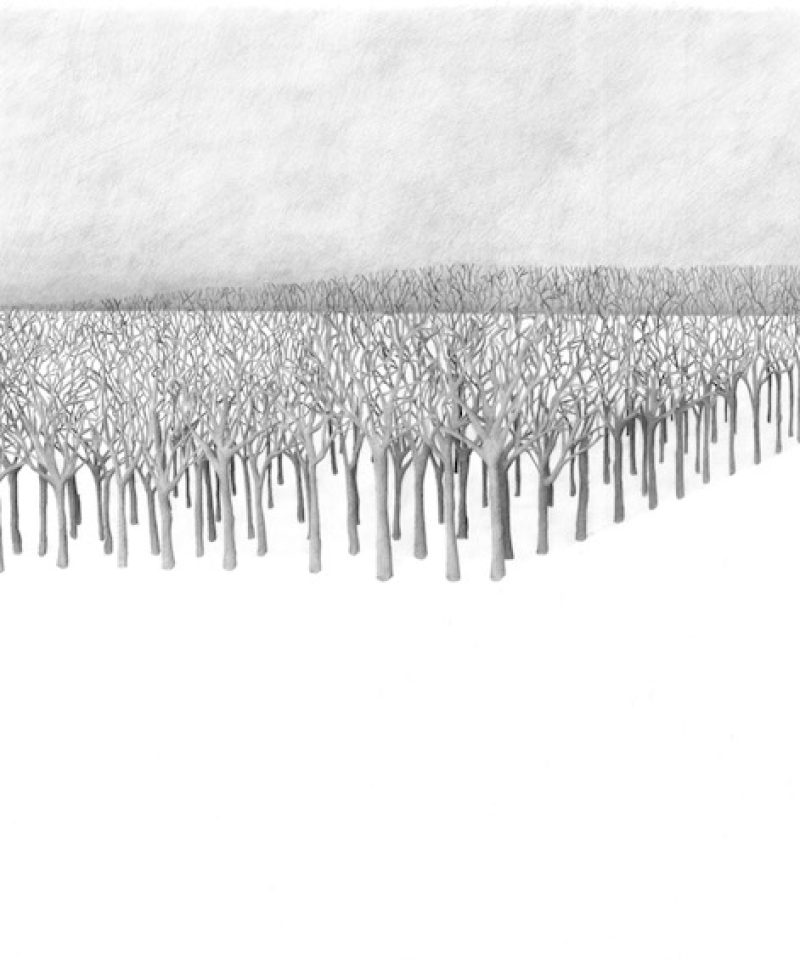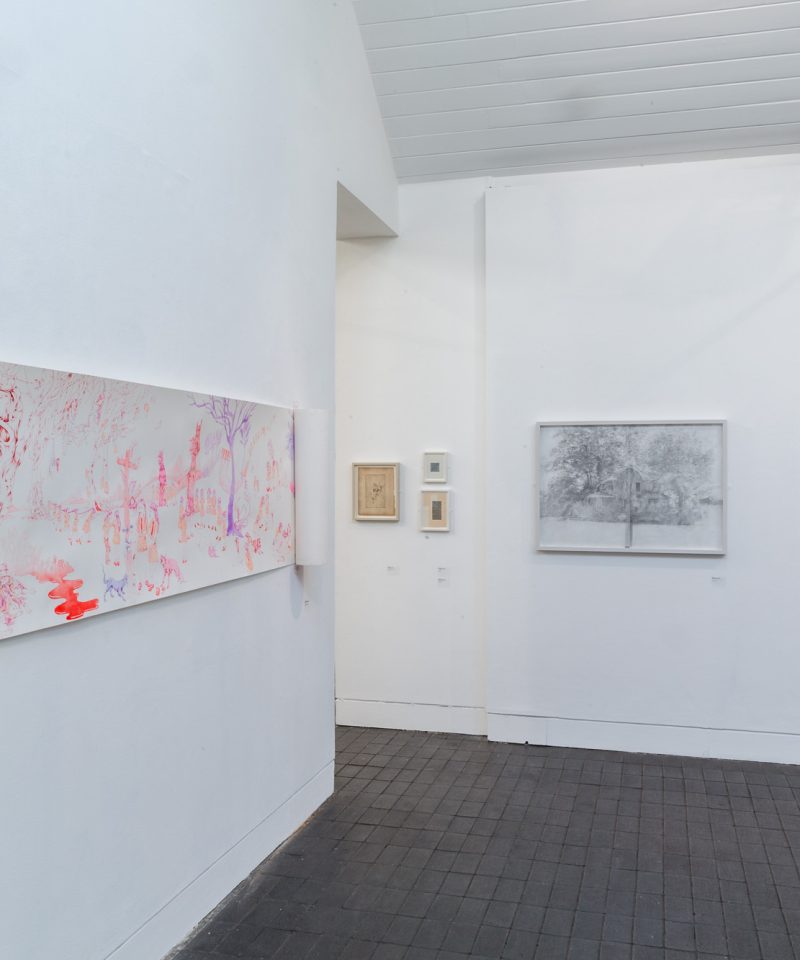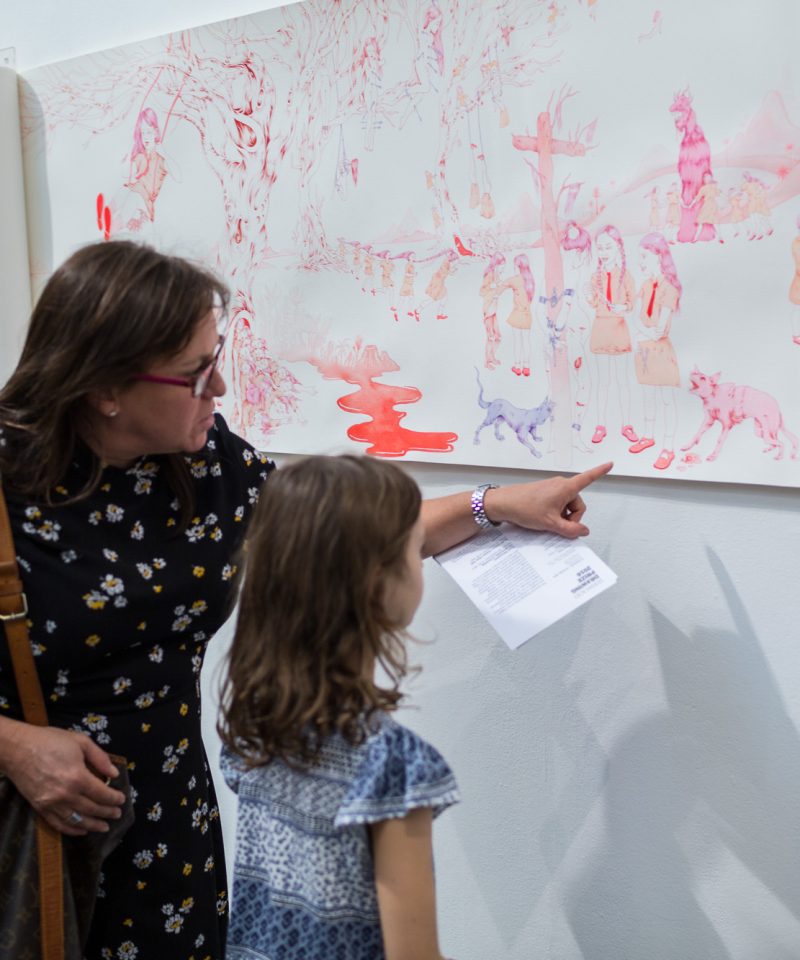In her 2012 book ‘The Severed Head’, Julia Kristeva declares, very seriously, decapitation ‘a privileged space.’[1] The volume explores the history of representation of the ‘severed head’, considering it as a necessary icon of the human desire to make visible the ultimate invisible: death. Her opening chapter, ‘On Drawing; Or, The Speed of Thought’, recalls her mother producing a drawing for her when she was a young child. When listening absent-mindedly to a children’s radio show, Kristeva is faced with a question: ‘what is the quickest means of transportation in the world? Send us your answer, with a drawing to match, on a postcard.’ Her little sister thinks it’s a plane, Kristeva thinks it’s a rocket, but their mother counters: ‘I’d say instead that it’s thought.’[2]
Kristeva concedes — to a certain extent: ‘Maybe, but you can’t draw a thought, it’s invisible.’ To which her mother responds with a drawing: a snowman in the process of melting, his head sliding off, ‘as though severed by the invisible guillotine of the sun’[3]. To the right is the planet earth, and Kristeva’s name, comprising her radio competition entry which won her first prize. The drawing impressed her young eyes in its concision of concept (only the speed of thought exceeds the speed of human bodies), the instantaneous unity between thought and hand channeling the most concentrated interiority into perceivable forms. Now, looking back, Kristeva also recognises her fears of death in the lines of the drawing, in its embodiment of the perishable, collapsible physical form. Her mother’s drawing becomes the genesis of her analysis of the icon of the severed head, as a capital moment in the history of the visible.
Kristeva has often written about, in various guises, the division of the visible and invisible. In her 1980 publication ‘The Powers of Horror’ she presents the notion of abjection as the human reaction to a threatened breakdown in meaning, which stems from the loss of distinction between inner and outer, the self and the other. Our bodily divisions when interrupted by excretions such as urine, blood, pus, sperm and excrement can give rise to abjection, in their reminder of physical frailty and death’s persistent materiality. Using her own categorisations, Kristeva’s description of drawing manifests as a sort of anti-abjection. If drawing is ‘the spontaneous ellipsis when conception and execution merge’[4], then it is the opposite moment of abjection, where meaning stems from a breakdown of distinction between inner and outer.
When we are ill we are in chaos. All bodily processes exist on the verge of failure. When exposed or weakened, our system has the capability of causing irreparable damage to itself. If something ruptures, clots, bleeds, oozes, rips, weakens or contains within it a foreign entity, this order becomes dis-ordered. All physical manifestations of illness provide the potential for abjection. Our systematic order is the continued containment of our interiority. When this is challenged, this is chaos. But chaos also contains within it the possibility of a new order. By extension of our interiority, drawing can become the agent for defining this new order.
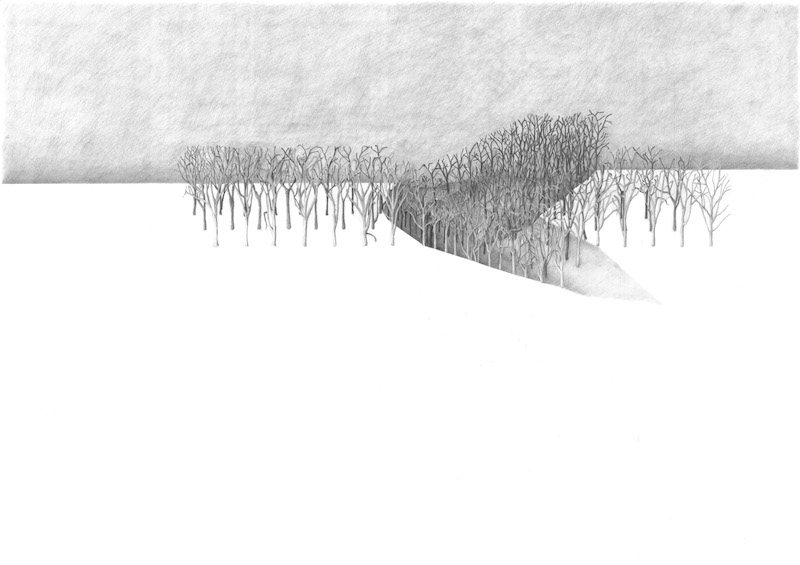
In my previous essay, I discussed drawing as a tool for representing the unseen, transitory nature of psychosis. In this sense, it parallels a mental unraveling; drawing’s volatility is used to communicate the mental which is not made visible by the physical. When there is the dis-order of illness, either mental or physical, the openness of drawing can also function as a means of regaining order. When there is a perceivable threat to the interior , drawing, similarly to writing, can be a relief: to see lines, emerge from your hand, having been communicated from your brain. While the abject arises from a breakdown in meaning as a result of the presentation of the inner, which is unrecognisable or ‘alien’ to the outer, the act of drawing encourages a recognition of the inner (thought), by means of the outer (hand), which results in a ‘coalition’ of meaning.
Earlier this year Sam Little had a mini stroke. A mini stroke, or transient ischaemic attack, is caused by a temporary disruption in the blood supply to part of the brain. This disruption in blood supply results in a lack of oxygen to the brain. A bodily function momentarily fails, with physical symptoms which, although not exposing literal insides, displays itself via the body: speech and visual disturbance, numbness or weakness in the face, arms and legs. Surely the stroke is the epitome of abjection, as the body displays a breakdown in communication with itself, and meaning for the body who experiences it.
During his recovery, Little produced the triptych ‘Order’, which is exhibited in the Jerwood Drawing Prize 2016. The three drawings are variations of tree formations, which are sculptural and geometric. Little, having previously studied architecture, is interested in positive, graphic designs, and the clarity of constructive form. ‘Order No. 1’ was initially born out of an observation of a right angle of trees in Deptford park. The trees are condensed into a parallelogram. The bare, leafless branches accumulate into a dense, intricate woodland, but retain their autonomy. If you follow each branch, it is ultimately subsumed into the vast volume of structures, but can always be traced back to it’s starting point. They are absolute entities, which piece together an exaggerated sense of formality. As a mental exercise, Little’s drawings are a visual attempt to regain and retain order, to push the limitations of the brain via the hand.
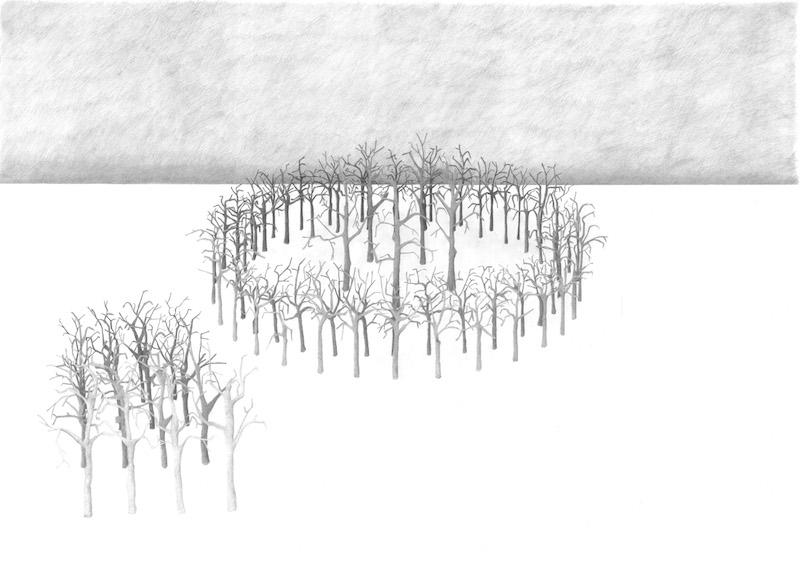
As Little’s trees and drawings multiply they clearly articulate his practical, and psychological, inclination to work with uncorrupted rigour, but they also accrue their own systems. Through proliferation, the trees become archetypal, like building blocks of organic constructions. In ‘Order No. 3’, they have shifted into a circular configuration. Their idiosyncratic branches start to look like gestures. Their placement is reminiscent of Stonehenge, or a very static game of Ring a Ring o’ Roses. Isolated and cluttered, the trees seem to operate on an unknown algorithm. This algorithm can only be Little’s conscious, and unconscious, decisions in re-building and recovering control after the dis-order of his illness.
In Greek mythology, everything came out of chaos. In its inception it was considered a creative void, an enabling ground of what is to come. It is, like drawing, the potential for constant re-birth and regeneration. When we are ill, we are in chaos. We can re-order ourselves, or embrace our dis-order, through the act of drawing. For Kristeva, her mother’s drawing crystallised the icon, a thought made ‘seen.’ After, or during, the dis-order of illness, to make seen what is invisible is the ultimate reassurance. Here, our own, incomprehensibly complex, fragile and uncontrollable bodily systems, in their surfacing, do not result in abjection but its opposite force: alleviation.
Bibliography
Kristeva, Julia, The Severed Head: Capital Visions, 2012, Columbia University Press
Kristeva, Julia, The Powers of Horror: An Essay on Abjection, 1982, Columbia University Press
[1] Kristeva, 2012, 75
[2] Ibid, 2
[3] Ibid
[4] Ibid
